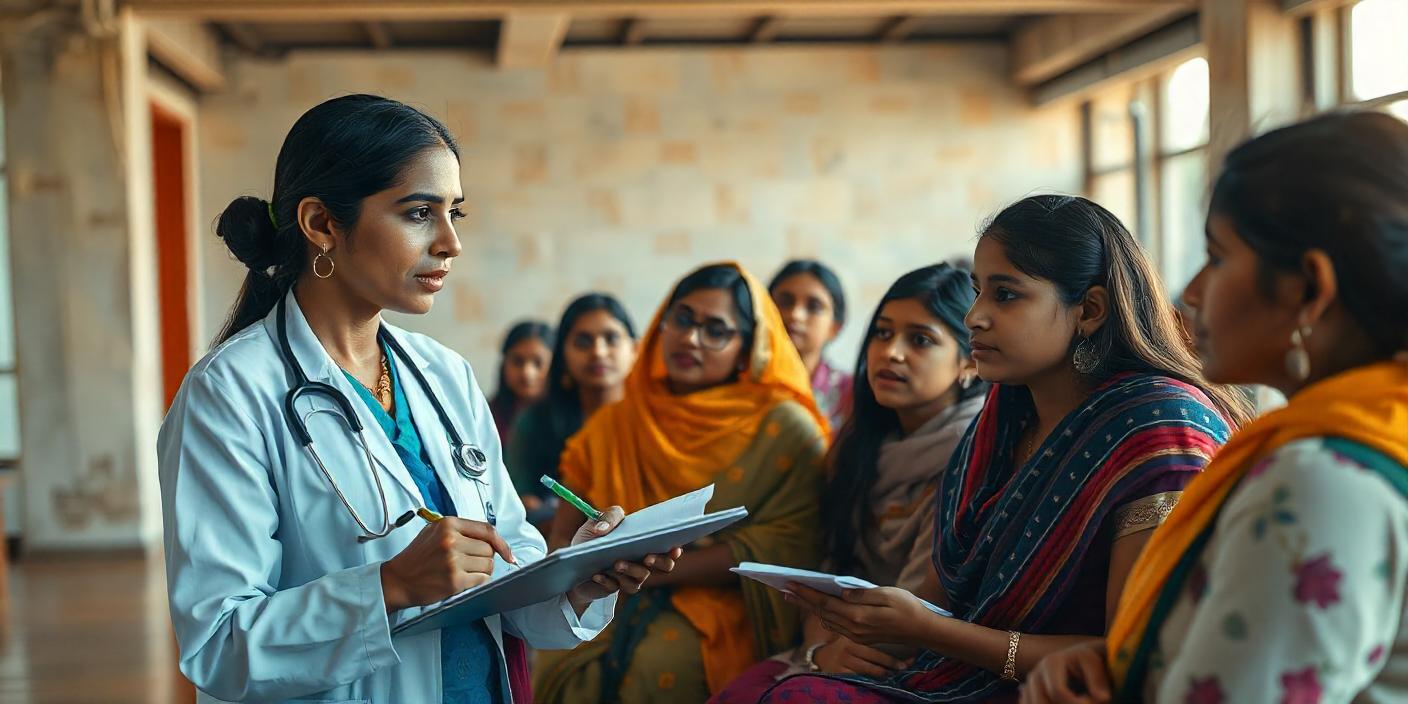Adolescent Problems
- Home
- Specialities
- Gynaecology
- Adolescent Problems

Overview
Adolescent problems are the gynaecological problems and reproductive health problems faced the girls during their puberty or teenage.
PCOS
Polycystic ovary syndrome (PCOS) is a hormonal disorder among women of reproductive age. Females with PCOS may have irregular or prolonged menstrual durations or excess male hormone.
Polycystic ovarian syndrome (PCOS) is a heterogenous disorder characterized by androgen excess, ovarian dysfunction and polycystic ovaries.
Causes
Not clearly known.
- Changes in lifestyle, diet and stress may lead to it.
- Genetic factors e.g CYP 21 gene mutation may play a role.
- Family history of PCOS or diabetes.
Symptoms
- Absence of periods or delayed cycles
- Irregular cycles.
- Infertility
- Hirsuitism i.e increased hair growth over face and body.
- Acne
- Obesity
- Alopecia
In adults cycles interval of >45 days, <8 cycles per year needs evaluation for PCOS. In adolescents 1 year post menarche delayed cycle for >90 days needs evaluation.
PCOS is also associated with various other disorders such as Diabetes, Cardiovascular diseases and Metabolic syndrome.
How is it diagnosed?
Based on Rotterdam criteria, where two of the following should be present,
- Oligo or anovulation characterized by delayed cycles or absence of menses.
- Clinical or biochemical evidence of hyperandrogenism i.e acne, hirsuitism or alopecia or lab evidence.
- Ultrasound criteria: To be used only in adults. Using TVS a follicle number of ≥20 per ovary, and/or ovarian volume of ≥10ml of either ovary.
Investigation
- Calculated free testosterone or free androgen index is assessed.
- Thyroid profile and other hormones are evaluated according to symptoms.
- Lipid profile
- Screening for diabetes is also done. 75 gm oral Glucose tolerance test is done.
- Ultrasonography: Transvaginal ultrasound is preferred if patient is sexually active. Ultrasound not a reliable criteria for diagnosis in adolescents.
Management
- Lifestyle Modification: Includes Dietary advice and Regular physical activity.
- Dietary advice: 1200 -1500 Kcal diet is recommended. 30 % calorie deficit diet is advised to patients with excess weight.
- Patients are recommended to cut down on refined sugar, refined oil and simple carbs. Intake of complex carbohydrates, seasonal fruits and vegetable is advised.
- Regular Physical Activity: 30-45 mins of moderate physical activity is recommended at least 5 times a week in adults.
- 60 mins of moderate physical activity is recommended in adolescents.
- Those who keep an account of steps, 10000 steps per day is adequate to maintain it.
- Adequate water intake: 3 liters per day.
- Other lifestyle changes: Follow a schedule. Early to bed and early to rise rule should be followed.
- Yoga, Meditation helps to keep stress levels down.
Treatment
Drug Therapy
Combined oral contraceptives: Low dose OCP is the first treatment option for patients with PCOS.
OCPs with antiandrogen like cyproterone is preferred for cases with hirsuitism or biochemical evidence of hyperandrogenism.
Insulin Sensitizers: Metformin is indicated in cases with impaired glucose tolerance, high BMI, acanthosis nigricans (dark patches on folds of skin like neck).
Antiandrogens: For hirsuitism.
Newer therapies: Myoinositol derivatives
Surgical Management:
Laproscopic ovarian drilling:
Can improve fertility rates.
Heavy Menstrual Bleeding
Overview
Heavy menstrual bleeding (also known as menorrhagia) is a common disorder among women. It refers to menstrual bleeding lasting more than seven days and involves more blood flow than is typical during menstruation. In other words we can say that, it is excessive menstrual blood loss which interferes with a woman’s physical, social, emotional or material quality of life. For Illustration, woman have to take a leave from work/school because of inability to go out in public, inability to do household work or unable to carry day to day activities.
Symptoms / When to see a doctor.
- When amount of blood loss is more than 100 ml.
- 6 or more fully soaked pads in a day.
- When 3 or more tampons are used per day.
- When menstrual cup collects more than 30 ml in a day.
- Need to change the pad every hour or few hours in a row.
- When there is Soaking/Staining of clothes.
- Passing of clots.
- Period lasting for more than 8 days.
- Symptoms of anemia, such as tiredness, fatigue or shortness of breath
Causes
- Fibroids
- Polyp
- Blood coagulation disorder.
- Thyroid disorder
- Drugs and Medications
- Hormonal cause
- Uterus, cervical cancer
- HTN, Diabetes
Ovarian Cysts
Delayed Menarche
Delayed menarche means delayed puberty in girls. in other words, when breasts don’t develop by age 13 or menstrual periods do not begin by age 16. Puberty changes occur when the body starts making sex hormones. These changes normally begin to appear in girls between ages 8 to 14 years old.
Clinical Team
Doctor Name
Degree, Speciality
Doctor Name
Degree, Speciality
Are you having health problems? Contact us today!
Call Us 24/7: 0161-525 25 25

